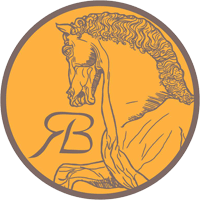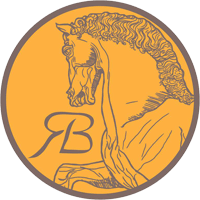Topline
When we watch the grace and power of a good Grand Prix horse and rider it appears effortless. There is no division between horse and rider, two entities are molded into one in which each partner is truly happy, eagerly working to please the other without subordination. This partnership of trust, confidence, and reliability comes after years of consistent training. If a rider is so fortunate to come across a trained Grand Prix horse it takes a great deal of time to develop a solid relationship and a connection must exist, almost instantly, from the first time the rider meets and rides his or her new partner.
In order to be a successful Grand Prix rider one must be strong, have excellent stamina, be patient, and like their horse, have elegance and finesse. The amount of effort that goes into completing one Grand Prix test is staggering. There are 32 movements that you are scored on-32! The test takes about 7 minutes to complete, let alone having to create the perfect warm-up for you and your horse. The warm-up sets up your test for success or failure. You must try several different warm-up routines to see which one gives you and your horse maximum stamina, energy, looseness, at the same time brilliance. Whether your horse needs to be schooled several hours prior to your test with a long period of rest and with a quick warm-up just before your test, or one longer warm-up just before your test, or a short quick warm-up for the more laid back horse, it is the rider’s responsibility to discover which routine works best and adjust it when necessary.
One of the biggest mistakes a Grand Prix rider can make is solely focus on the difficult movements, such as piaffe and passage, and forget about schooling the basics. We mustn’t forget what allows our horses to do such highly collected movements; basic transitions. For instance, as an FEI rider if we have trouble getting the timing on the tempi-changes correct then we must go back to a more basic movement, such as simple changes, in order to make our horse more crisp and responsive to our aids, not simply keep repeating our mistakes by drilling the incorrect tempi’s further confusing and tiring our horses. Thus, as Grand Prix riders we must be patient and smart always returning to our basic foundation.
When we examine the differences in a horse at Intermediate I and Intermediate II to a Grand Prix horse we see not only a horse that is more collected and uphill, but a much more precise stronger athlete. Intermediate I is considered a moderate difficulty level that helps prepare our horse for Grand Prix, in that it allows the horse and rider to become more confident and comfortable with full canter pirouettes, two-tempi’s, and in general a more taxing longer test. Intermediate II however, is a moderate to advanced test that is a spring board to prepare the rider and horse for Grand Prix. The biggest differences between the two are the addition of a short piaffe and passage tour with the allowance of advancing a meter in the piaffe work in an effort to not only make the movement easier, but to keep the horses active and thinking forward, never backwards. The one-tempi’s are introduced in a lesser number, and there are more difficult transitions, such as passage to canter. Also much steeper half-pass lines and frequent short periods of canter half pass with counter changes of hand are required. All the while the difficult goal of maintaining an electric, yet relaxed horse. A true Grand Prix horse can not only do all the movements correctly, but when put in a competition can mentally maintain confidence and clarity.
In order to be a successful Grand Prix rider one must be strong, have excellent stamina, be patient, and like their horse, have elegance and finesse. The amount of effort that goes into completing one Grand Prix test is staggering. There are 32 movements that you are scored on-32! The test takes about 7 minutes to complete, let alone having to create the perfect warm-up for you and your horse. The warm-up sets up your test for success or failure. You must try several different warm-up routines to see which one gives you and your horse maximum stamina, energy, looseness, at the same time brilliance. Whether your horse needs to be schooled several hours prior to your test with a long period of rest and with a quick warm-up just before your test, or one longer warm-up just before your test, or a short quick warm-up for the more laid back horse, it is the rider’s responsibility to discover which routine works best and adjust it when necessary.
One of the biggest mistakes a Grand Prix rider can make is solely focus on the difficult movements, such as piaffe and passage, and forget about schooling the basics. We mustn’t forget what allows our horses to do such highly collected movements; basic transitions. For instance, as an FEI rider if we have trouble getting the timing on the tempi-changes correct then we must go back to a more basic movement, such as simple changes, in order to make our horse more crisp and responsive to our aids, not simply keep repeating our mistakes by drilling the incorrect tempi’s further confusing and tiring our horses. Thus, as Grand Prix riders we must be patient and smart always returning to our basic foundation.
When we examine the differences in a horse at Intermediate I and Intermediate II to a Grand Prix horse we see not only a horse that is more collected and uphill, but a much more precise stronger athlete. Intermediate I is considered a moderate difficulty level that helps prepare our horse for Grand Prix, in that it allows the horse and rider to become more confident and comfortable with full canter pirouettes, two-tempi’s, and in general a more taxing longer test. Intermediate II however, is a moderate to advanced test that is a spring board to prepare the rider and horse for Grand Prix. The biggest differences between the two are the addition of a short piaffe and passage tour with the allowance of advancing a meter in the piaffe work in an effort to not only make the movement easier, but to keep the horses active and thinking forward, never backwards. The one-tempi’s are introduced in a lesser number, and there are more difficult transitions, such as passage to canter. Also much steeper half-pass lines and frequent short periods of canter half pass with counter changes of hand are required. All the while the difficult goal of maintaining an electric, yet relaxed horse. A true Grand Prix horse can not only do all the movements correctly, but when put in a competition can mentally maintain confidence and clarity.
© 2024
Rigdon & Blake Stables | All Rights Reserved

